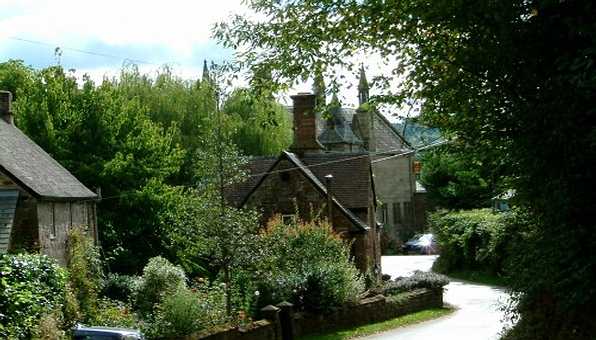
The Local Time is Saturday, 27-Jul-2024 12:42:31 CEST
Goodrich Tourist Information and Travel Guide |
|
|||
| YOU ARE HERE: Main Home Page > Wye Valley > Goodrich |
|
|
|
Goodrich in the county of Herefordshire is a beautiful village situated on the River Wye and close to the Forest of Dean. The Wye Valley and the Forest of Dean are popular tourist destinations. |
|||||
 |
|||||
Goodrich village in the Wye Valley and the County of Herefordshire Goodrich is a quaint village in the Wye Valley, bordering the Royal Forest of Dean, a small village that grew up next to Goodrich Castle, a fine 'Marcher Castle' which stands on a high spur of land commanding strategic position above a ford, an important ancient crossing point of the Wye. The castle was begun c1101 and from1326 onwards was the family seat of the Earls of Shrewsbury, although by the 16th century it had passed into the hands of the Earls of Kent and was no longer inhabited on a permanent basis.
Renowned the world over for the quality of its salmon, the river Wye is loved by fishermen of all persuasions. Walkers enjoy the rich wildlife along its banks and canoeists can paddle for miles through magnificent scenery. Canoeists can find countless thrills on the River Wye. |
|||||
|
|||||
|
|||||
| BACK TO TOP | |||||
Goodrich Tourist Information and Travel Guide |
|||||
| This page last modified Tuesday, 28-May-2019 11:01:02 CEST | |||||
 In 1642, at the start of the civil war, Goodrich was seized by the Earl of Stamford for Parliament, but the surrounding countryside was against him and he withdrew. A Royalist force under Colonel So Henry Lingen occupied the castle and held it for four years, but after Hereford fell to Parliament in 1644, the garrison of Goodrich became rather isolated and in May 1646 Colonel John Birch, the Parliamentary commander of Hereford was given orders to advance on the castle and secure it. The castle walls however were unaffected by the Parliamentary cannon so Birch ordered that the castle's water supply be cut off and a siege mortar made to help in the attack. This weapon, which was capable of firing a 200lb /90kg explosive shell, was cast locally (either at nearby Whitchuch or Lydbrook) and earned the nickname 'Roaring Meg' (it still survives today in the grounds of the Churchill Gardens Museum at Hereford). In mid June the weapon arrived and after being moved into a position, its first few rounds soon breached the South wall. By this time, conditions inside were desperate and when news reached the castle that the king had been captured, the defenders finally surrendered. After the Civil War, the castle was left uninhabitable and it remained in ruins unitil1920, when the last private owner placed it into the care of the Commissioners of the
In 1642, at the start of the civil war, Goodrich was seized by the Earl of Stamford for Parliament, but the surrounding countryside was against him and he withdrew. A Royalist force under Colonel So Henry Lingen occupied the castle and held it for four years, but after Hereford fell to Parliament in 1644, the garrison of Goodrich became rather isolated and in May 1646 Colonel John Birch, the Parliamentary commander of Hereford was given orders to advance on the castle and secure it. The castle walls however were unaffected by the Parliamentary cannon so Birch ordered that the castle's water supply be cut off and a siege mortar made to help in the attack. This weapon, which was capable of firing a 200lb /90kg explosive shell, was cast locally (either at nearby Whitchuch or Lydbrook) and earned the nickname 'Roaring Meg' (it still survives today in the grounds of the Churchill Gardens Museum at Hereford). In mid June the weapon arrived and after being moved into a position, its first few rounds soon breached the South wall. By this time, conditions inside were desperate and when news reached the castle that the king had been captured, the defenders finally surrendered. After the Civil War, the castle was left uninhabitable and it remained in ruins unitil1920, when the last private owner placed it into the care of the Commissioners of the  Works (now English Heritage), who carried out a preservation programme.
Works (now English Heritage), who carried out a preservation programme.
